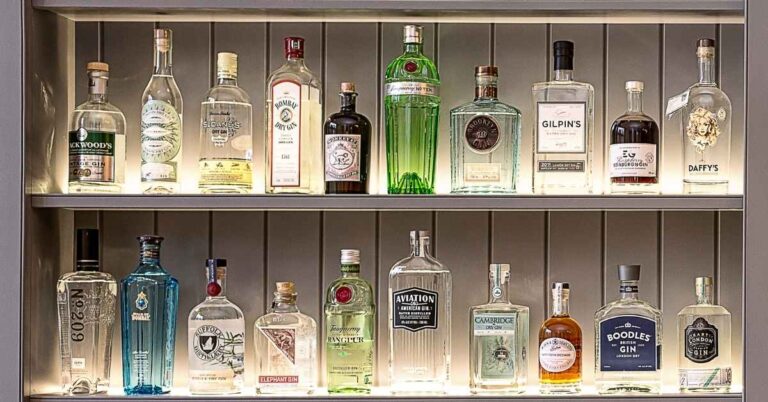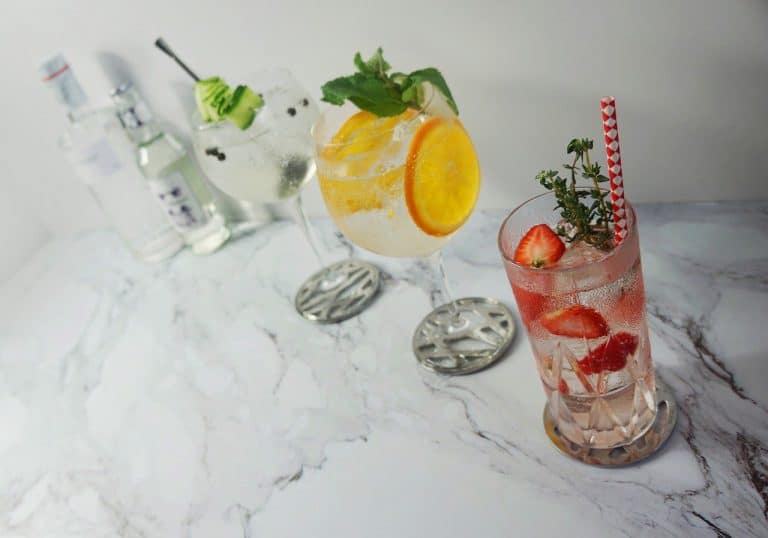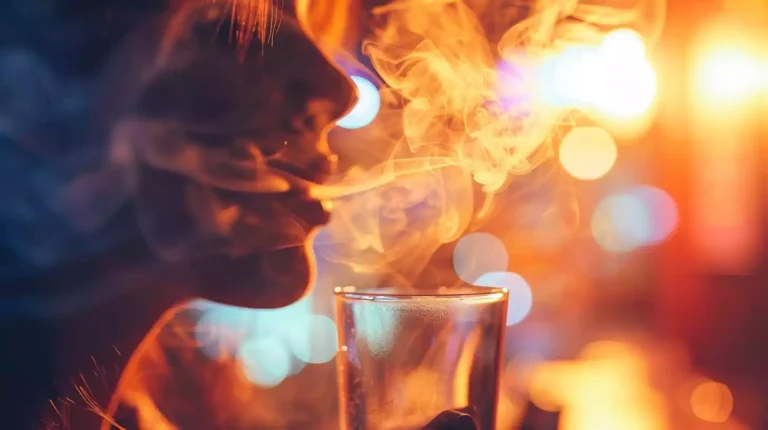Gin 101: Guide To The Different Types Of Gin And Their Uses
Gin is easily one of the most popular alcoholic spirits in the world, perhaps behind only whisky and vodka. In fact, you may have probably sampled a gin, if not directly, perhaps through a cocktail drink.
Gin is widely consumed on its own or as part of popular cocktails such as Gin And Tonic, Gimlet, or Martini. Gin also comes in several variations. What are the types of gin in the market now?
There are several popular gins types you can sample:
- London Dry Gin
- Dry Gin
- Plymouth Gin
- Old Tom Gin
- Japanese Gin
- Reserve Gin
These gins differ from each other in their botanicals, distillation techniques, and many more.
This article explores the different types of gin. We will look into how they are different and taste and are used in cocktails.
What Makes Gin Different From Other Spirits?
Gin is different from other spirits in that it is usually not aged in barrels before being bottled. Gin is also infused with flavors from herbs and spices, collectively called botanicals. Gin’s two characteristics differ from other spirits, such as whisky, vodka, or brandy.
Gin is probably one of the most popular spirits in the world, possibly behind only whisky and vodka. They are more popular than many other spirits because they have some unique characteristics that other spirits do not have.
Infusion From Botanicals
Gin is made using a base alcohol, usually distilled from grains such as barley or rye. The base alcohol is then infused with flavors from herbs and spices. These herbs and spices are collectively called ‘botanicals.’
The list of botanicals used may be different, depending on the distiller. As a result, you may get different tasting gin with a distinct aroma. The most common botanicals used include:
- Juniper
- Orange Peel
- Lemon Peel
- Russian Coriander
- Orris Root
- Liquorice Root
- Angelica Root
- Cinnamon Bark
- Juniper Berries
The infusion may also work differently, depending on the distiller. Some prefer to soak the botanicals with alcohol before removing them for distillation. Some prefer to distill the botanicals together with the alcohol.
Some distillers prefer to add botanicals in stages during distillation to impart flavors gradually. This sets gin different from other popular spirits, such as whisky or vodka.
Whisky and vodka generally do not have any flavors infused into them so directly, unlike gin. Instead, whisky acquires its taste and flavor as they age inside a barrel. Vodka, in general, is left to be light in flavor without any infusion or aging in barrels.
Rarely Aged In Barrels
Gin is also rarely aged in barrels. In many cases, pure grain alcohol is infused with flavor from the botanicals and then bottled for sale. You may see barrel-aged gin in some cases, but they are not common. They are more experimental in nature to explore how aging impacts gin.
This makes gin different from other spirits, such as whisky, rum, or brandy. These spirits spend at least several months aging in barrels to develop character, flavor, and taste. In fact, some may spend decades aging away quietly to develop great taste.
Types Of Gin
There are several popular gins types available:
- London Dry Gin
- Dry Gin
- Plymouth Gin
- Old Tom Gin
- Japanese Gin
- Reserve Gin
These gins differ from each other in their botanicals, distillation techniques, and many more. There may be other gin types, but they are less popular or may not be seen as a different type of gin.
In general, you may see several gin types available in the market, depending on where you are.
Certain gins are more popular in some markets due to their historical and commercial connection with the places they originate from. For example, Japanese gins may be popular in Japan and Asia.
London Dry Gin
London Dry Gin is a gin style that originated in the City of London, England, in the 17th century. It is the most popular and the most common gin you can find in many markets today.
London Dry Gin is probably the most regulated type of gin. In fact, a series of requirements were placed into the standard of London Dry Gin in European Union law. This means you must follow the standards before you can declare your gin as London Dry Gin.
To pass as London Dry Gin, the gin has to:
- Use a base spirit of at least 96% ABV (Alcohol By Volume)
- Use all-natural botanicals.
- All the botanicals must be added during the distillation process of the gin, not before or after.
- After distillation, only water and a small amount of sweetener can be added.
There are no requirements on the botanicals and how they should look and taste, but many drinks expect their London Dry Gin to taste clean, crisp, and intense. There should also be a strong taste of juniper berries.
Many drinkers also appreciate the sugarless, all-natural flavor London Dry Gin gives, which they describe as ‘dry.’
London Dry Gin is popular with mixologists, as they have a strong flavor to help mix with heavier drinks such as chocolate. London Dry Gin is also the go-to gin for most classic cocktails, such as Gin and Tonic, Martini, Negroni, and Tom Collins.
Some of the most popular brands of London Dry Gin include Bombay Sapphire, Gordon’s, and Beefeater.
Dry Gin
The term dry gin covers all types of gin distilled without sugar or sweeteners. In fact, London Dry Gin could be considered one of the variants under the Dry Gin family.
However, dry gin is much more lenient on standards than London Dry Gin. This means as long as the gin is distilled without sugar or sweeteners, distillers can experiment and play with the distillation process as they see fit.
For example, distillers can experiment with when to add and how long to keep the botanicals with the base grain alcohol. This differs from London Dry Gin, which stipulated that the botanicals must be added to the grain alcohol before distillation.
Dry gin makers can also add non-natural materials into their gin, unlike London Dry Gin. This means you may see things such as coloring or flavorings being added to dry gin. Fancy trying a glass of pinkish or orange-hued gin? Check out our top picks for the best pink gins.
Dry gin’s flexibility in taste, flavor, and color allows mixologists to use it in many ways. As a result, dry gin is also popular as a cocktail drink. Some of the most popular dry gins include Seagram’s, Bulldog, and Bluecoat.
Old Tom Gin
Old Tom Gin has very interesting characteristics due to its history and also its taste profile.
As a start, Old Tom Gin is very, very sweet. Suppose London dry gin and dry gin are all about having no sugar and keeping sweeteners away. In that case, Old Tom Gin is made with a generous amount of sugar.
As a result, Old Tom Gin tastes sweet and does not have a heavy juniper berry flavor. This allows distillers to experiment with botanicals, adding herbs and spices as they see fit. Unlike London Dry Gin, Old Tom Gin is also free from regulation. This means distillers can experiment in many ways with the making process.
This lack of regulation may also point back to Old Tom Gin’s less illustrious history. Gin was so popular with the working class in the 17th and 18th centuries that distilleries practically sprung up everywhere.
Without regulation, gin distillers simply distill gin as they see fit. Some added sugar generously to make their gin taste sweeter than the others. The lack of control resulted in gins of dubious quality, posing health danger to the population.
The British government responded by introducing the Gin Act in 1736. The act attempted to regulate and control gin, but pubs skirted the rule by selling underground.
They built a black cat statue, commonly known as Old Tomcat, by the locals to indicate that there is an underground gin for sale. Buyers could then drop some money into the mouth of the statue, and the bartender inside would pour a serving of gin, placing it on the cat’s paw.
Old Tom Gin died out as it was replaced by the more regulated London Dry Gin. Still, it resurfaced within the last decade, thanks to some craft distilleries.
Popular Old Tom Gins include Tom Bullocks, Aviation, and Purity. Their sweetness makes them excellent mixers to cut into the bitterness of other spirits.
Plymouth Gin
Plymouth Gin may differ from other gin types here because it has a geographical definition. Plymouth Gin can only be distilled and produced in Plymouth, England, specifically by the Plymouth Gin Distillery.
This makes Plymouth gin close to drinks such as Whisky, Champagne, and Cognac, which must be made in a particular region: Scotland, Champagne, and Cognac region in France.
Similar to many other types of gin, Plymouth gin only needs to be made in Plymouth, England. There are no other limitations on how the gin should be made, which means it can be made in many different ways.
As a result, Plymouth gin has a different taste profile than London Dry Gin or other types of gin. It can be described as mild and mellowed in taste.
It has less juniper-berry flavor but projects a more earthy, neutral taste. It does not taste as dry as London Dry Gin, yet it is not sweet like the Old Tom.
This may point back to Plymouth Gin Distilleries’ mixture of botanicals. Instead of relying on a juniper-berry heavy mix, more roots are used to produce the Plymouth gin. These roots may also impart some sweetness, making the gin smoother and sweeter than dry gins.
Plymouth Gin is commonly bottled with an alcohol content of 41.2% ABV. This is slightly above the average of 40%.
Japanese Gin
Japanese gin may sound like they are close to Plymouth Gin. You may assume that Japanese gin must be made in Japan. In that case, you are right.
However, that is pretty much the only requirement for Japanese gin. As long as you are distilling in Japan, you can make and experiment with your gin-making process in various ways. The gin you make can still be called Japanese gin.
Interested to know what the differences are between Japanese and London dry gin?
Read more about Japanese Gin vs. London Dry Gin
Japanese gin does display certain characteristics. One is that Japanese gin tends to be distilled using pot stills rather than column or reflux still. Pot stills are less efficient and slower but are seen to be able to produce higher-quality spirits.
Japanese gin distillers also enjoy adding local Japanese botanicals to their gin. These botanicals may range from green tea to Sakura flowers, Sanshu peppers, or Gyokuro tea. As a result, Japanese gin may taste different than your common gin.
Some popular Japanese Gin includes Roku, Nikka Coffey, and Ki No Bi.
Reserve Gin
You may see reserve gin at the Lamborghini or Koenigsegg of gins. They are made with better ingredients and production techniques. The word “reserve” reflects that the gin is unique, limited, or high quality.
Reserve gin is usually made by hand and with more attention to detail, focusing on traditional, small-batch methods.
Reserve gin is also made with a higher percentage of high-quality botanicals, like rare and exotic herbs and spices, which give the flavor more depth and complexity.
Since they are much more expensive, Reserve gin is rarely drunk as a cocktail. It is instead drunk neat or with a few ice cubes, which lets the drinker fully enjoy the complex flavors and smells.
Reserve gin is usually made by well-known gin distilleries. Artisanal or craft distillers also make reserve gins as their specialty. You may be able to tell reserve gin from regular gin by their elaborate and luxurious packaging.
What are the flavor differences between different types of gin and dry gin?
The main differences in gin vs dry gin lie in the flavor profile. While different types of gin may have varying botanical infusions, dry gin is characterized by a strong juniper flavor with hints of citrus and herbs. Other gins may offer more prominent floral or spicy notes.
Final Thoughts
While all gins share certain characteristics, each type has its own unique flavor profile and history.
Whether you prefer the classic juniper-forward taste of London Dry Gin, the softer and more balanced flavor of Plymouth Gin, or the sweeter, richer notes of Old Tom Gin, there’s a gin out there that’s perfect for you.
With the growing popularity of Japanese and Reserve Gins, there are even more options to explore.






